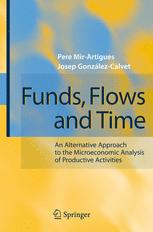

Most ebook files are in PDF format, so you can easily read them using various software such as Foxit Reader or directly on the Google Chrome browser.
Some ebook files are released by publishers in other formats such as .awz, .mobi, .epub, .fb2, etc. You may need to install specific software to read these formats on mobile/PC, such as Calibre.
Please read the tutorial at this link: https://ebookbell.com/faq
We offer FREE conversion to the popular formats you request; however, this may take some time. Therefore, right after payment, please email us, and we will try to provide the service as quickly as possible.
For some exceptional file formats or broken links (if any), please refrain from opening any disputes. Instead, email us first, and we will try to assist within a maximum of 6 hours.
EbookBell Team

5.0
98 reviewsThe subject of this book is production, which is an important and extensive field in economic science. In fact, production, distribution and consump tion were long considered the three federated kingdoms which together formed the great empire of the economy. According to other slightly dif ferent traditions, production also held pride of place, specifically as a basic link in the long chain of social reproduction. Today, whatever the theoreti cal approach, production is a fundamental requirement for human survival. This was not, however, always the case. For much of the history of man kind hominids were hunter, scavenger and gatherers, with very little con trol over their environment, and extremely little in the way of artefacts with which to work. However, since the Neolithic revolution, productive processes have constituted an essential mechanism, providing human soci ety with goods and services to satisfy its needs and cravings. A simple, yet pertinent, characterisation of the production process con ceives it as the transformation of a conglomerate of factors into a given number of products within a specific period of time. Refining this defini tion a little further, the said factors may be broken down into different categories: natural resources, means of production (covering two species: working capital and fixed assets) and the different forms of specific work.